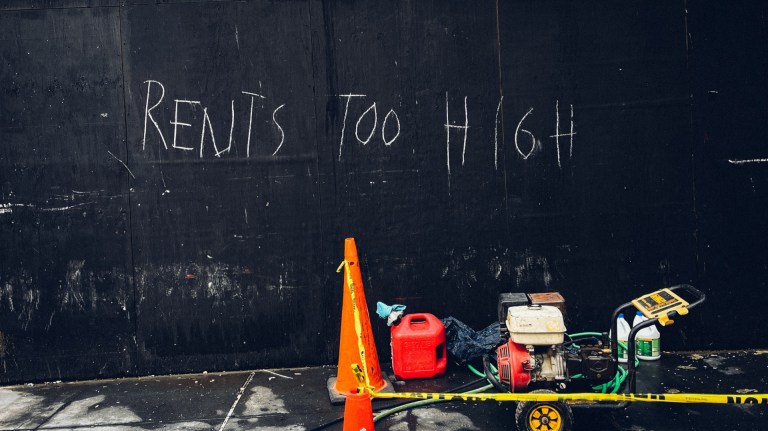The top 10 companies, which account for roughly half of all private sector completions, have enough land to last them more than eight years at current building rates.
So, why are they still spending so much money accumulating land?
Let’s go back to Letwin. If you delete the word ‘speculative’ and insert ‘to maximise profit’ we can probably all agree on the nature of the problem.
His report says that housebuilders “protect their profits” by constructing homes “at a pace that matches the market’s capacity to absorb these homes at prices determined by reference to the local second-hand market”.
Housebuilders, it continues, need to “maintain a sustainable business” and do this “by ensuring that they, rather than their competitors, hold as much of the land on which they will later wish to build as is compatible with their capital constraints” in order to “minimise market entry” and maintain market share “while building out at a stately pace”.
Taylor Wimpey… has accumulated enough land to build a couple of cities
In other words, forget ‘speculation’ (a red herring used to confuse the issue), land banking is inherent in a business model in which the pursuit of profit produces a drive to maximise prices by restricting supply and to thwart competitors by buying up as much of the potential building land
as possible.
The recent history of the biggest housebuilder, Taylor Wimpey, illustrates this perfectly. In the current decade, it has accumulated enough land to build a couple of cities.
On the one hand, it has steadily expanded its consented land bank from 64,270 plots in 2010 to 75,955 in 2018. Alongside this, it has nearly doubled the size of its strategic land bank from 77,060 to 127,414 plots. Altogether, it now owns 14 years’ worth of land at its current construction rate of nearly 15,000 completions annually.
Taylor Wimpey has, meanwhile, seen its operating profit rise 10-fold from £88m in 2010 to £880m in 2018, which has in turn allowed it to boost the annual dividend pay-out from £18m to £600m.
This will understandably raise the blood pressure of those who can’t afford to buy a house or anyone who cares about Britain’s deepening housing crisis.
For someone like Letwin, who believes the market can solve economic and social problems, Taylor Wimpey is behaving rationally in creating what he calls a ‘sustainable’ business. He sees the challenge as finding a way to allow the big housebuilders to make as much – or more – profit by building homes at a faster rate.
In the 1960s, record levels of housebuilding were achieved mainly because local authorities built more than 1.5 million dwellings.
The key, he thinks, is more diversity of house types on big developments so that the builders don’t have to fear the market being flooded at a specific price point. And, to achieve this, he suggests using incentives and a ‘viability’ fund to entice them to accept master plans with
diversity requirements.
But, like Help To Buy, this is simply taxpayers subsidising housebuilder profits without any guarantee of success.
A more straightforward option is surely to face up to the reality that the private sector has failed to fill the gap created when Margaret Thatcher axed council housebuilding.
The housebuilding data tells the story very starkly. In the 1960s, while the private sector did better than it does now, record levels of housebuilding were achieved mainly because local authorities built more than 1.5 million dwellings.
In the following decade, councils built another 1.3m units. But in the 1980s council housebuilding plummeted until its contribution had, by the end of the 1990s, dropped to a few hundred homes a year.
This was an ideologically driven change that Blair-era Labour accepted. Public housing was increasingly portrayed in a negative light. There was a disproportionate focus on ‘troubled’ estates, and it came to be seen purely as a provision for people on low incomes.
Yet, in 1979, according to the Social Market Foundation, 20 per cent of households in the top decile of the income distribution lived in social housing. The sale of council houses was successful under Thatcher because most estates were pleasant and tenants could pay a mortgage.
Public housing should not be second best. But local authorities will need access to land to develop if they are to compensate for private sector failings.
The period since Thatcher has seen the state sell off half its property, but it still owns 10 per cent of Britain’s land. Sites belonging to the NHS, the Ministry of Defence and other public bodies could be used to build tens of thousands of houses.
At the same time, housebuilders should be prevented from hoarding so much by imposing a maximum ratio of land bank plots to completions and a shorter time limit for developing land with planning permission. Letwin’s word games won’t solve anything.
Steve Howell is a journalist and the author of Game Changer and Over The Line
What is land banking?
Private housing developers store big banks of undeveloped land.
The top 10 building firms are hoarding more than 600,000 plots up and down the country.
But why would they sit on land instead of building the homes that will ease the housing crisis and make them a profit?
Well, the slowdown in housebuilding since the 1970s has pushed the average price of a new-build home up by 38 per cent since 2010, compared with an average of 30 per cent for houses more widely.
But the eye-watering profits creamed off by the builders in the following years (not to mention the dividends for their shareholders) provoked the government review last year under Tory MP Oliver Letwin.









